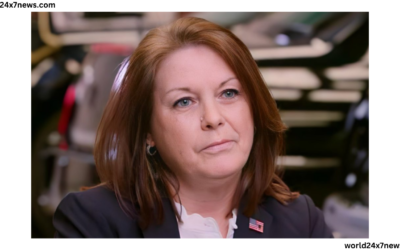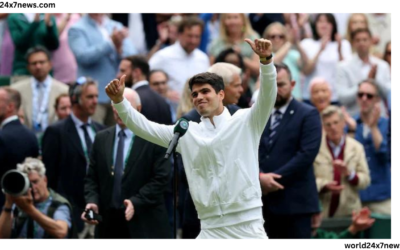Global beauty industry: Reshaping the global beauty industry, New face of beauty
Introduction
The beauty industry is in the midst of a new era of expansion, with global retail sales expected to record a compound annual growth rate of 6% between 2022 and 2027. Skin care, fragrance, color cosmetics and hair care all expected to grow globally between 2022 and 2027. As China’s dominance in the industry wanes and the US becomes increasingly competitive, global players will seek out new markets to diversify their reach, with India and the Middle East as emerging hotspots.
What is beauty?
Today’s $427 billion beauty industry will have reshaped itself around an expanding array of products and markets. Consumers, particularly younger generations, will be spurring this reshaping. As their own definitions of beauty morph while their perceptions of everything from their role in sustainability to the importance of self-care evolve. Brands and retailers will also change, seeking greater agility and adopting multichannel operating models. They will be doing this as competition in an already crowded market continues to intensify across all categories – skin care, makeup, fragrance and hair care.
Beauty’s definition will continue to broaden to encompass much more than the lipsticks, face masks and perfumes associated with the sector as consumers seek to look and feel good. As part of today’s $1.5 trillion global wellness industry, wellness-inspired products – from ingestible supplements to sleep aids to lotions made using ancient medicinal traditions. And have already captured the attention of consumers as well as retailers embracing greater self-care and mindfulness in our post-pandemic daily routines. The melding of wellness and beauty is only expected to become more pronounced.
For beauty leaders, it will be a unique time to flourish, with strategies that reflect a new face for beauty
1) Wellness Awakens
A new definition of beauty is reshaping the market as consumers shift their objectives from aesthetic perfection to holistic wellbeing. Brands can tap into emerging wellness sub-categories – from sleep to sexual intimacy to ingestible beauty. To upgrade their existing products and expand their portfolios, provided they do so with credibility and authenticity.
2) The New Growth Map of global beauty
Beauty’s international growth blueprint of the past decade needs a refresh. China, though still a powerhouse, can no longer be the sole growth engine for brands. The US, which will continue to be the biggest market in the world. And will increase in importance for the industry even as competition for market share intensifies. Other markets, notably the Middle East and India, may offer a range of ways to offset those challenges.
3) Gen-Z Decoding
As Gen-Z grows up, brands must adapt, finding new ways to speak their language. This may require retiring traditional ways of doing business – from marketing to product development – and rethinking assumptions about this diverse. Digitally savvy and demanding generation that prioritises value and efficacy when choosing their beauty brands and products.
4) Scale Imperative
For many emerging beauty brands, the early days of getting up and running has been the relatively easy part. Now, they need to confront the greater challenges that continuing their growth trajectories entail. In an industry that has become overcrowded, geographic and channel expansion will likely be critical for gaining further market share.
5) Mergers-and-acquisitions
In the short term, beauty M&A activity may not deliver as many megadeals as seen across the industry in the past. But the deal-making will continue to be buoyant. The potential benefits for buyers and sellers remain as strong as ever, playing a pivotal role in strategies. And focused on international growth, innovation and competitive product portfolios.
The global beauty market
The global beauty industry through a set of key dynamics impacting brands and retailers in 2023 and beyond. Market intelligence, insights from industry executives and other experts, and proprietary analysis, identify top business opportunities. While also providing both price segment- and category-wide retail sales forecasts over a five-year period to 2027.
The big takeaway is that the beauty market is expected to continue demonstrating the resiliency it has cemented in recent years, showing that time and time again it can withstand – and even thrive profitably and grow – amid economic turbulence, while other consumer sectors struggle. It’s now an industry that everyone from top-tier financiers to A- list celebrities wants to be a part of, with good reason. By 2027, the global beauty industry will record over $580 billion of retail sales, growing at 6 percent per year.
It depends on brands’ and retailers’ ability to navigate the dynamics that this edition of The State of Fashion explores that how the industry reaches that figure new geographic hotspots, the burgeoning luxury opportunity. The route for emerging brands to scale. The evolving landscape for mergers and acquisitions and The steady rise of wellness-related beauty. Also the complexities of the Gen-Z beauty consumer.
First and foremost, geographic diversification is more essential than ever. It was only recently, for example, that brands could focus their footprints on the industry’s two top countries – China and the UK. Both markets will remain mighty forces for the industry with China estimated to reach approximately $96 billion by 2027 and UK approximately $115 billion. But in both markets, various factors mean growth will be harder to come by for individual brands. However, there is a silver lining. other countries and regions are ready to step into the limelight, including the Middle East and India. Brands can also find opportunities by targeting consumers with products and services in the top tier of the pricing pyramid. luxury beauty has the potential to grow from around $20 billion today to around $40 billion by 2027.
Also Read: White Men Can’t Jump 2023: Debunking Stereotypes
Conclusion
As the melding of wellness and global beauty is only expected to become more pronounced. The next few years will also be a period of reckoning for some brands that until recently had carved out niches for themselves and whose reputations were built on disruption. These challenger brands have begun treading the same bumpy path as other small and medium-sized brands in their quest for scale. For sure, a beauty brand’s trajectory to $20 million in annual sales. And will continue to be quite different from the one to $250 million or $800 million, especially with the vast number of brands entering the industry.















